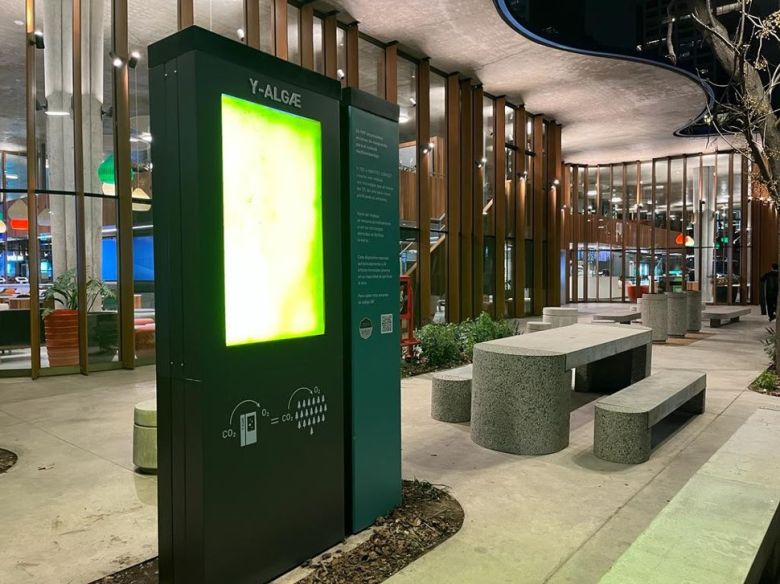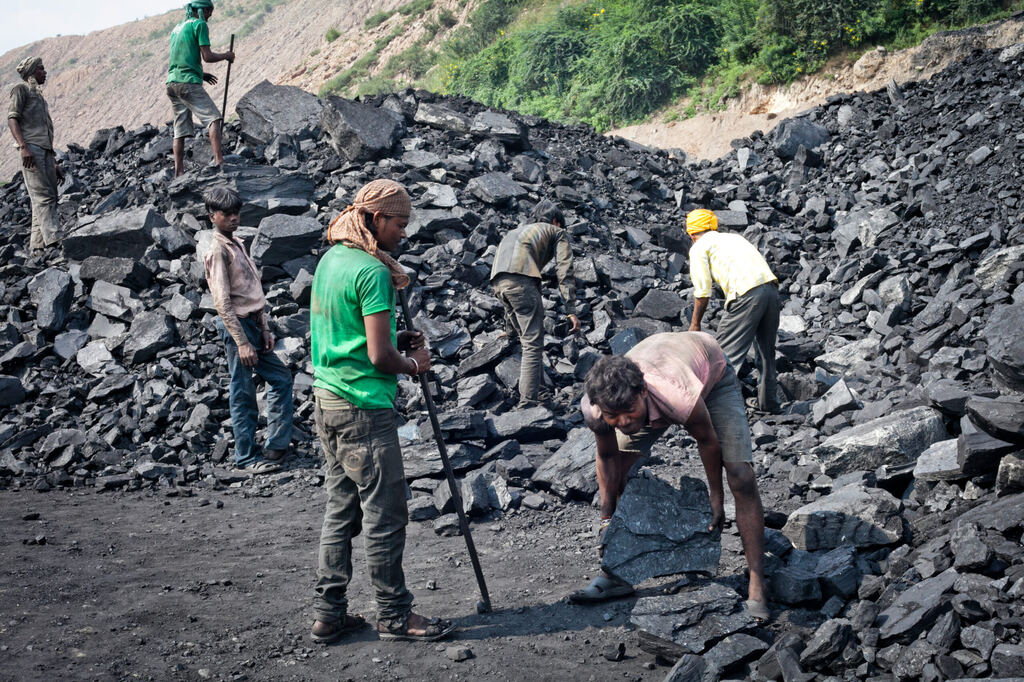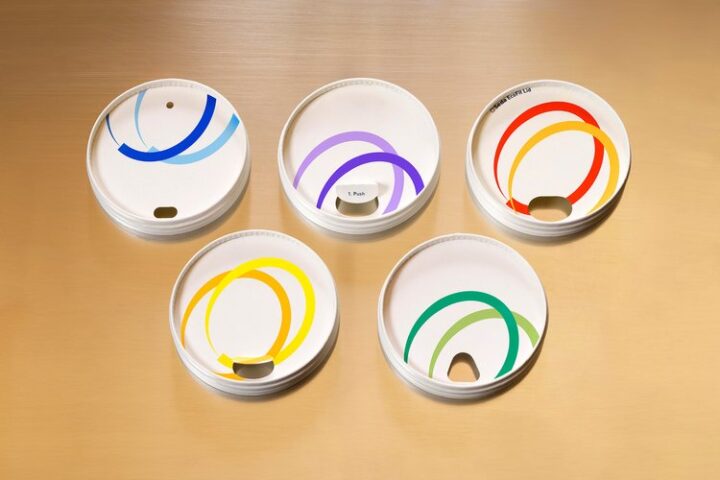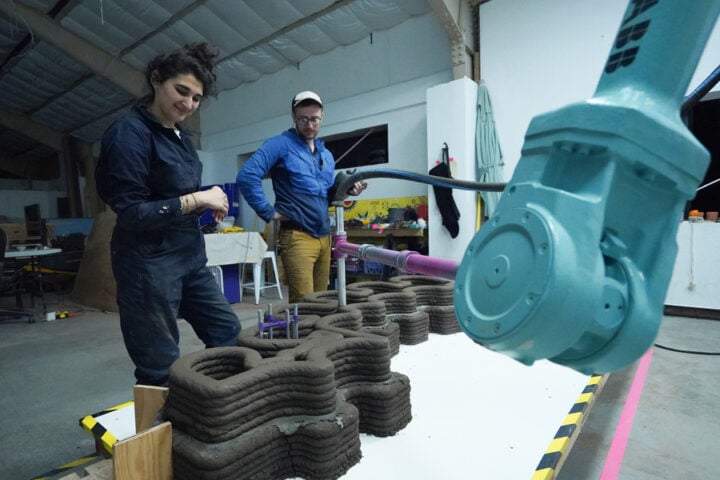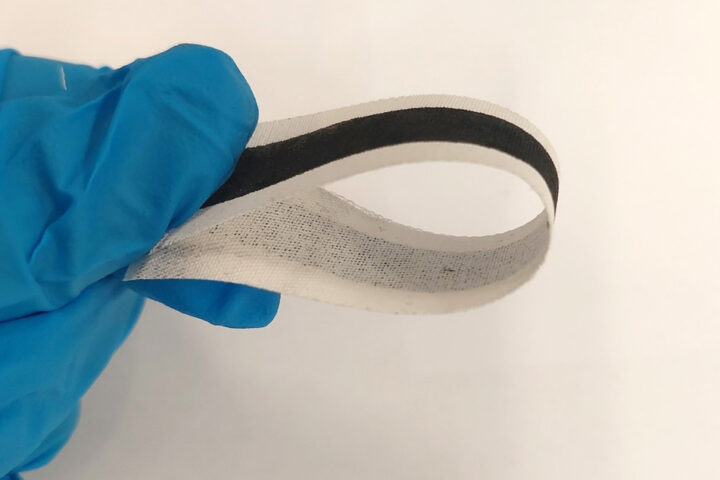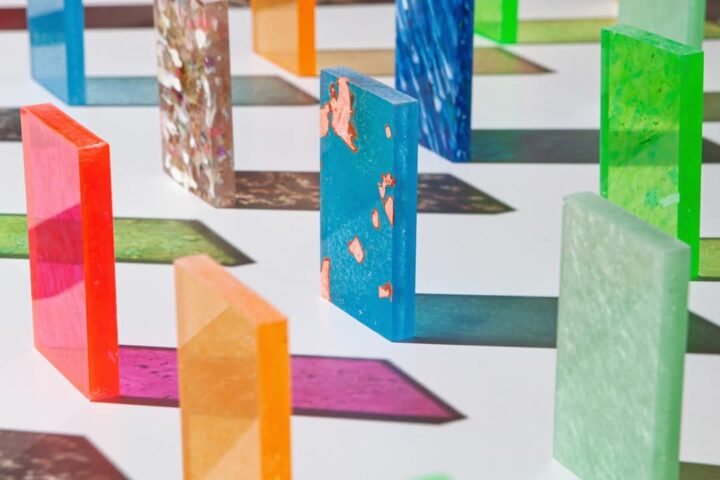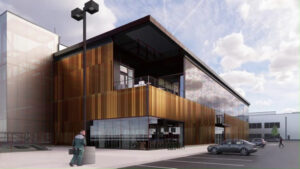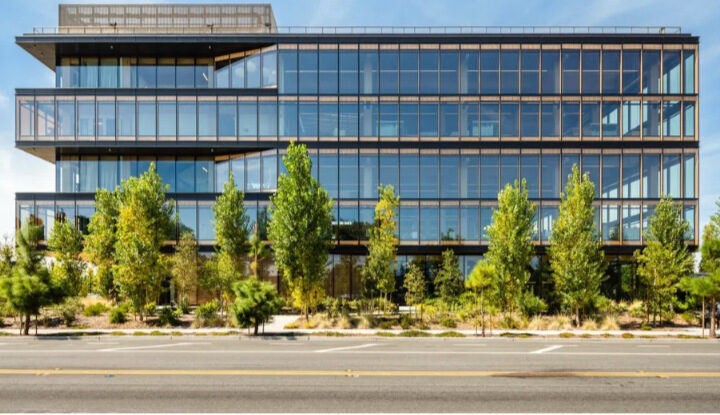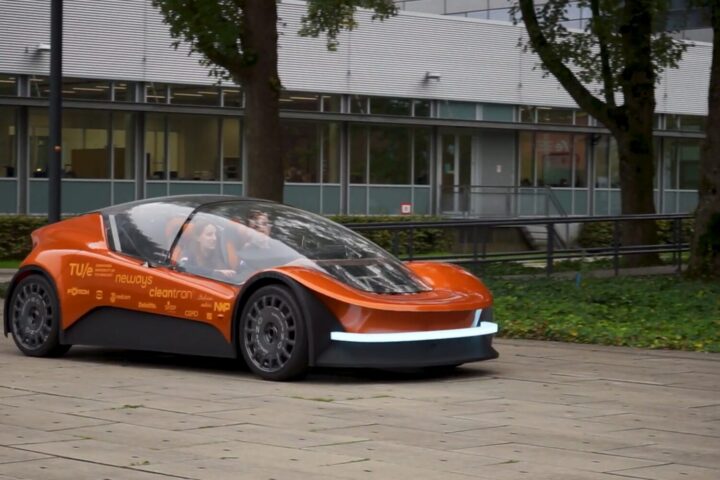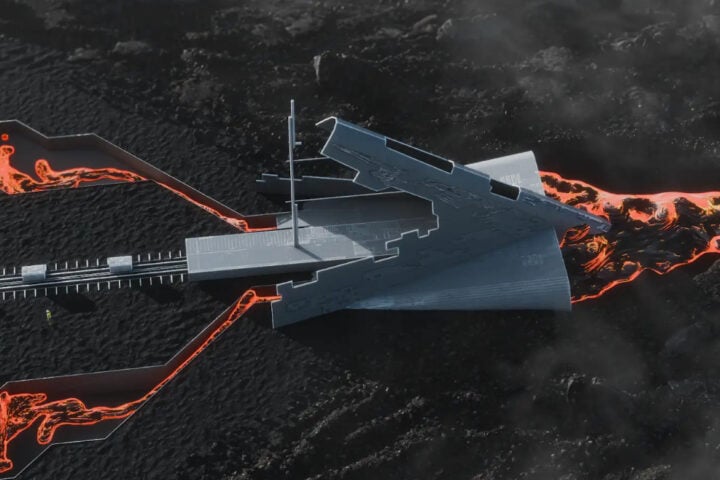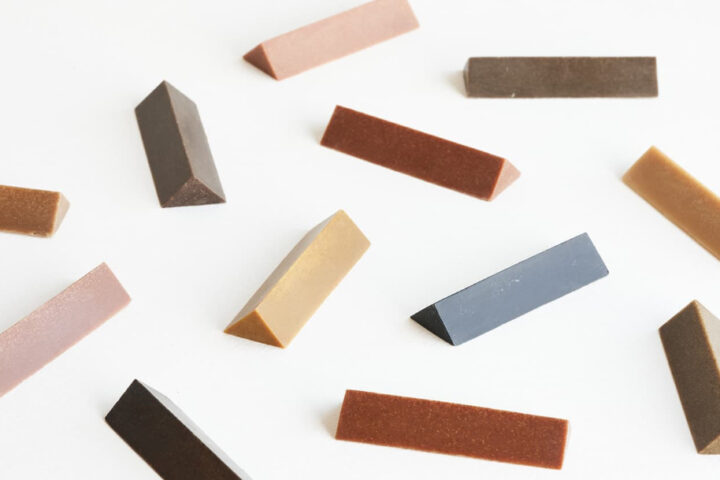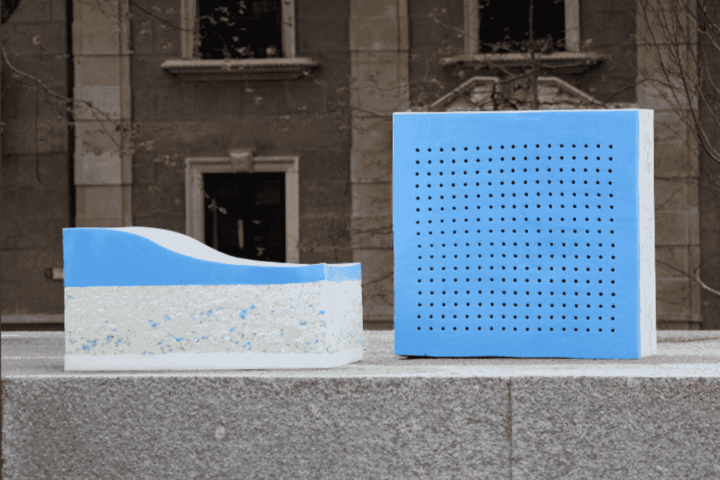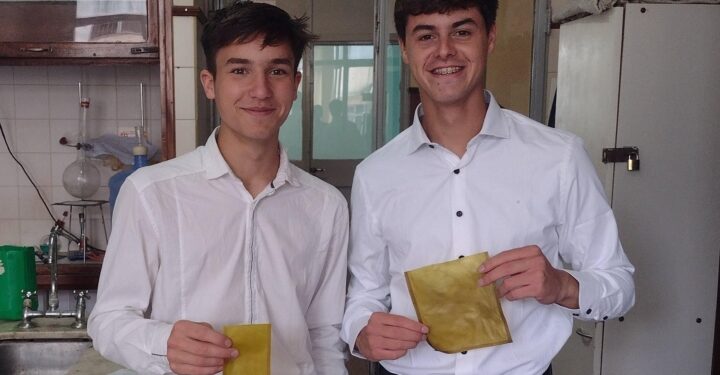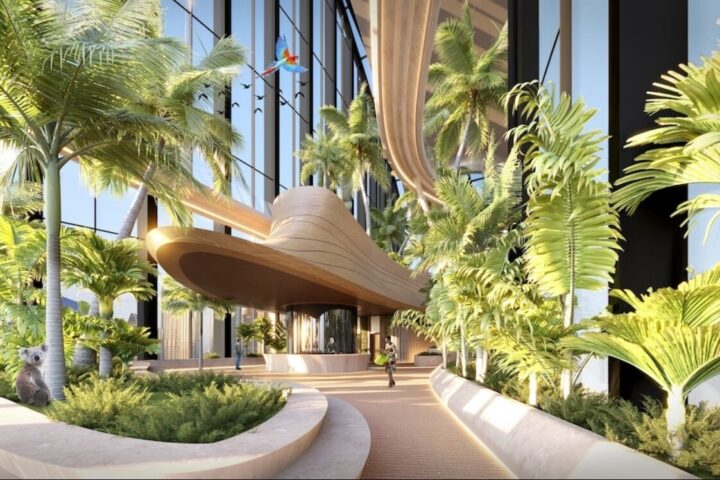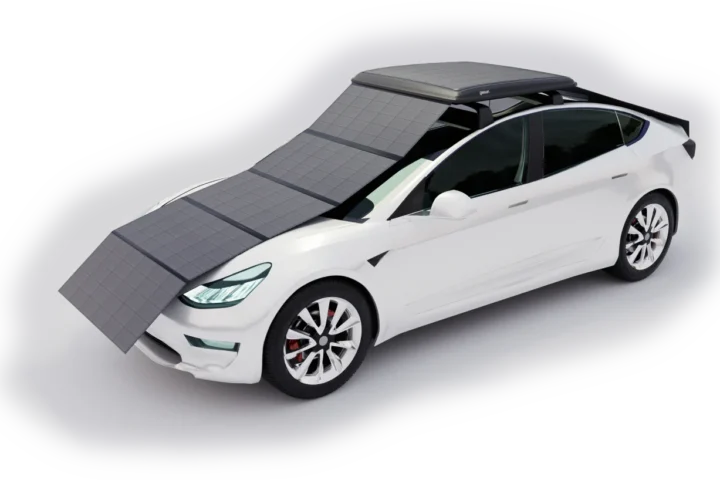The “liquid tree” or the Y-ALGAE project was developed by Y-TEC, an Argentine technological development company in the oil and gas sector, with YPF, CONICET, and the Institute of Biodiversity and Biotechnology Research. The Y-ALGAE project is the first of its kind in Argentina. These devices are composed of a photobioreactor that uses native microalgae to eliminate carbon dioxide from the air and produce oxygen in urban areas. It is estimated that this type of technology is between 10 and 50 times more efficient than a tree in purifying the air.
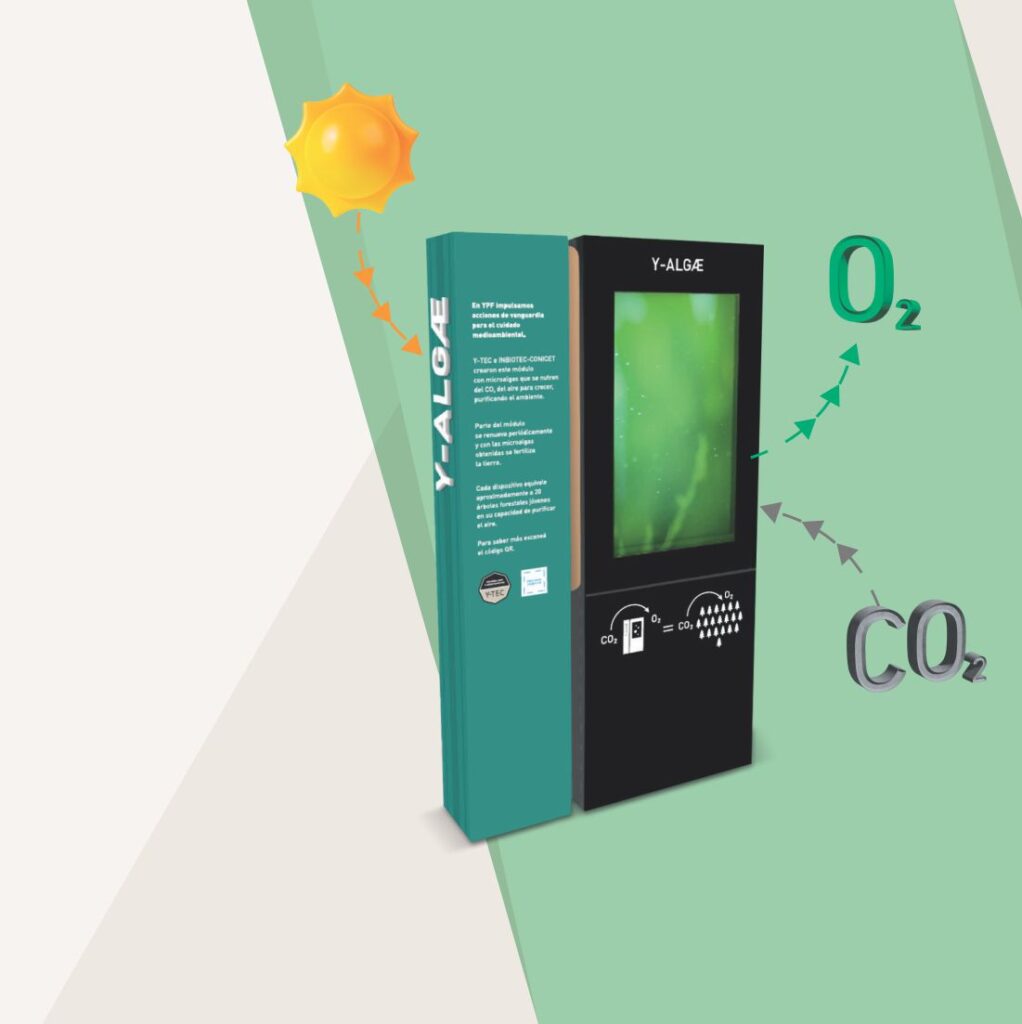
The active component of the device is native microalgae from the southeast of the Buenos Aires province, microscopic organisms that, through photosynthesis, use the energy provided by sunlight (or artificial light) to convert carbon dioxide—a greenhouse gas partly responsible for climate change—into oxygen and biomass. The idea behind this type of technology is to leverage these developments to combat climate change in urban areas.
María Mar Areco, a researcher from the National Scientific and Technical Research Council (CONICET) and a professor at the National University of San Martín (UNSAM), explained that microalgae have numerous benefits. They can divide and grow under appropriate conditions, and they perform photosynthesis. In other words, they use CO2, fix it to generate biomass, and release oxygen during the photosynthesis process.
Similar Post
For scientists, this is a very versatile technology because it also allows the use of wastewater or production water for its operation, which supports the circular economy, using its biomass as a source of clean energy. For the Y-ALGAE project, it is expected to use biomass as biofertilizer for the production of native trees and also as a component in concrete.
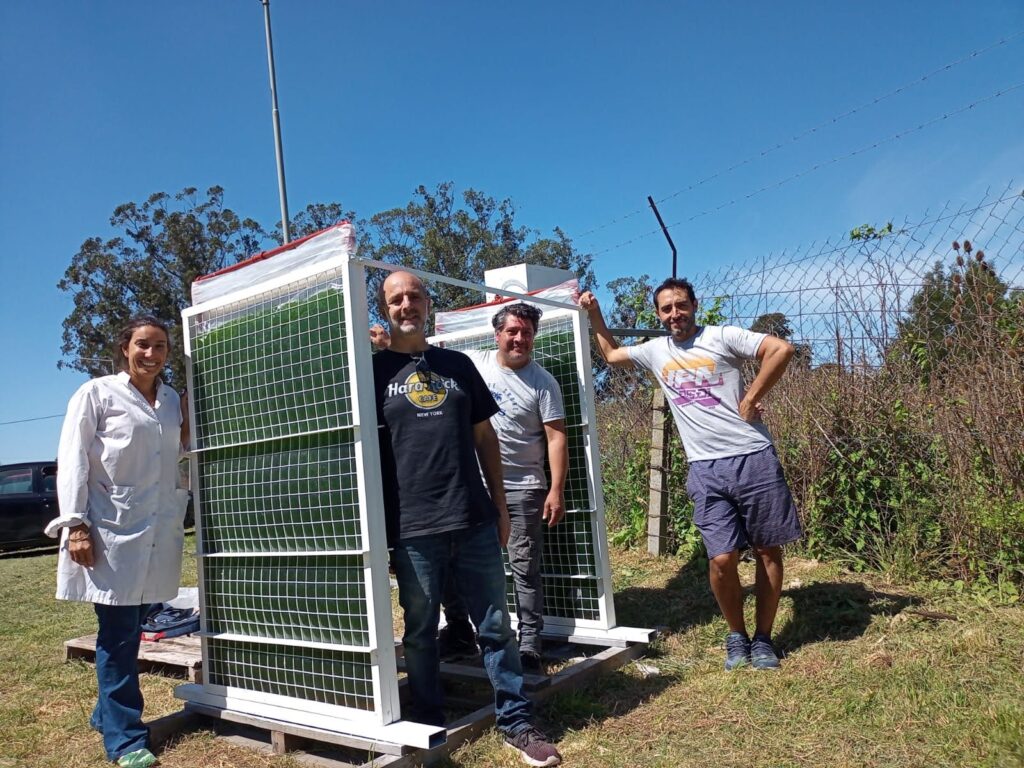
Climate change and the role of liquid trees The original project was designed in 2021 by the University of Belgrade, Serbia, under the name Liquid 3. This type of technology was conceived under a concept of alternative sustainability for urban environments that have limited or reduced space or that represent a source of high pollution.
The “liquid trees” were created in 2021 by the University of Belgrade, Serbia, under the name Liquid 3 and emerge as an alternative to combat climate change. These urban photobioreactors use the ability of microalgae to remove CO2 and produce oxygen and biomass and, according to experts, are between 10 and 50 times more efficient than a tree. The company YPF joined this initiative by installing this type of “liquid tree” at the service station located on Figueroa Alcorta and Juramento Avenue in Buenos Aires.
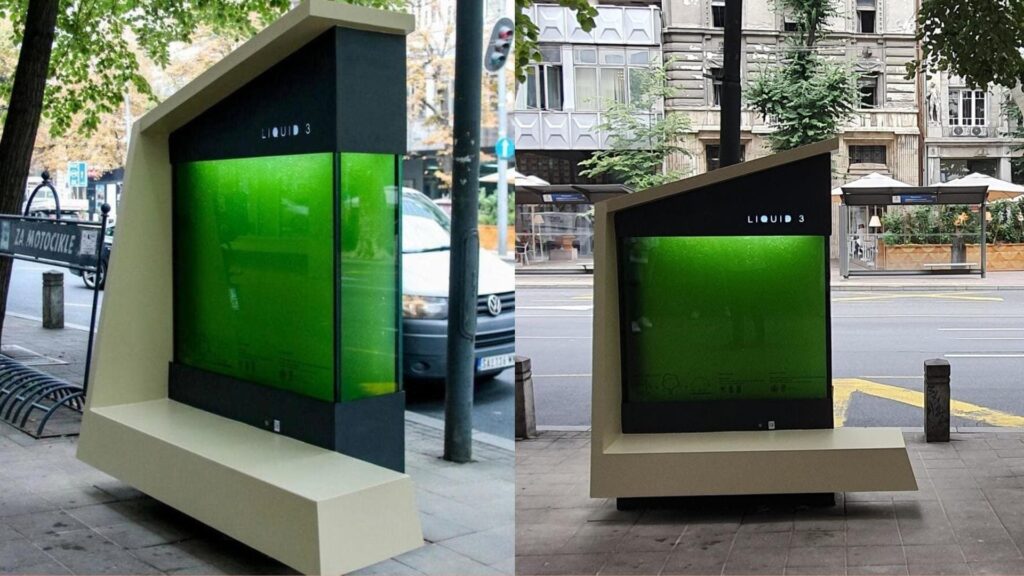
The technology has been gaining relevance in recent years globally due to its adaptability to urban areas where planting trees is an unviable alternative. Moreover, its particular appearance has been used as the focus of awareness campaigns about climate change.
Specialists highlight that each Y-Algae unit is approximately equivalent to 20 young forest trees in its air-purifying capacity. Periodically, the tanks of this product must be emptied and the water with microalgae replaced, which poses challenges for its maintenance in cities.
However, despite the boom, this technology is experiencing, developments in South America are still in their infancy. The Y-ALGAE project is the first in Argentina and so far only two “liquid trees” have been installed in the country.
